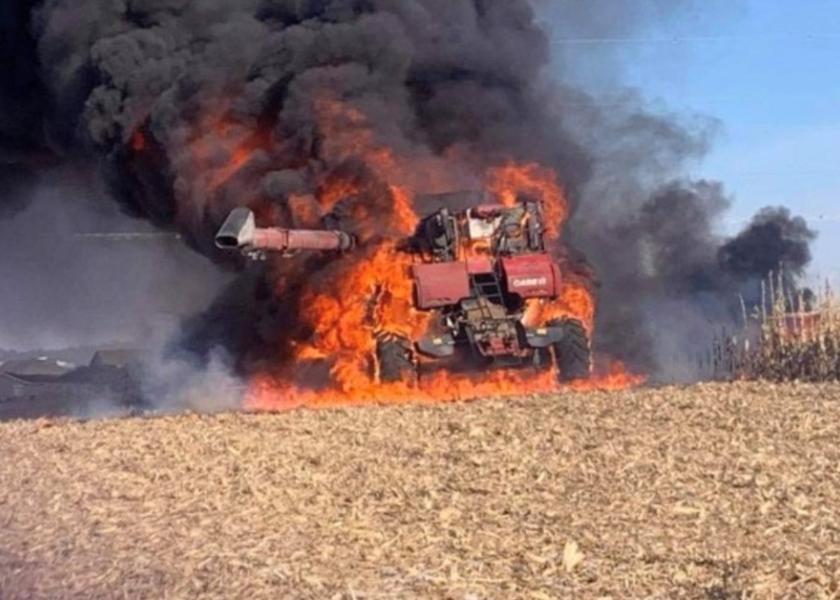Top Lessons to Help You Avoid Machinery Fires

Drought conditions across the Corn Belt and really the entire U.S. set the table for combine and equipment fires. Some things I’ve learned too late about machinery fires:
1. Warning lights and grain cart drivers should never be ignored. If multiple warning lights in a combine’s cab starting flickering, or engine and slow shaft speed warning systems all come on at once, there’s a good chance a main wiring harness has melted back in the engine compartment due to engine fire. Perhaps the best early warning system for combine fires is an attentive grain cart driver who always scans the machine as they approach it.
2. Carry nothing less than two of the biggest fire extinguishers available, whether they are chemically-charged or water-charged. Make sure they’re both accessible from ground level. I’ve seen more than a few charred fire extinguishers still clamped in the engine compartment of burned-out combines.
3. Strong tailwinds can whip chaff and debris into the engine compartment and against exhaust manifolds on older combines. Newer combines have “enclosed” engines to reduce but don’t eliminate that risk.
4. Never assume a combine fire is out. Big, corrugated plastic wiring harnesses in the engine compartment often get packed with super-dry crop dust. That dust can smolder like a fuse inside those harnesses for dozens of feet from the actual fire. It’s tough to get water inside those plastic harness protectors, but a fire isn’t out until all of those protectors are cool to the touch.







